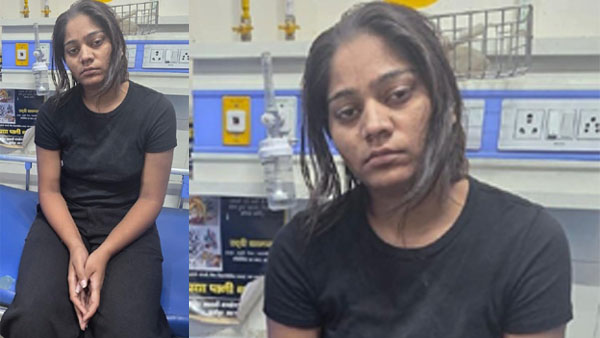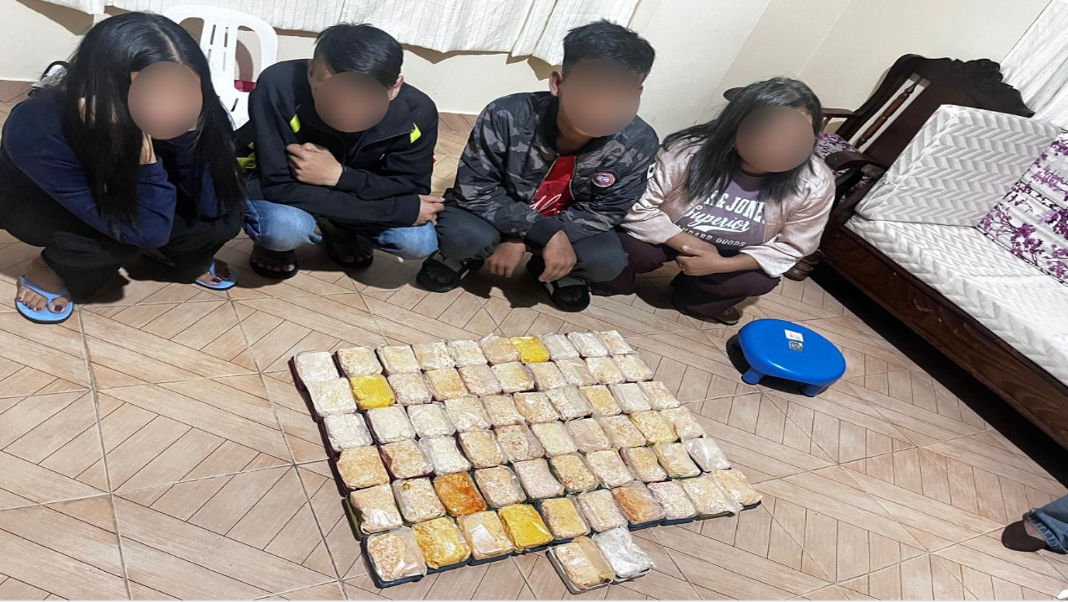The Raghuvanshi Case and Its Lessons
By Dipak Kurmi
In the verdant hills of Meghalaya, a tragedy unfolded that not only shattered the lives of a newlywed couple but also cast a harsh spotlight on the state’s reputation and the role of India’s national media in shaping public perception. The murder of Raja Raghuvanshi and the subsequent arrest of his wife, Sonam Raghuvanshi, during their honeymoon in Sohra (Cherrapunji) in May 2025, became a sensational saga that exposed deep flaws in media narratives, perpetuated harmful stereotypes, and tested the resilience of Meghalaya’s tourism-dependent communities. This episode, marked by a relentless media trial and the eventual triumph of diligent policing, serves as a clarion call for responsible journalism and systemic reforms in tourism management to safeguard both visitors and the state’s image.
The saga began with Raja and Sonam Raghuvanshi, a couple from Indore, Madhya Pradesh, who embarked on their honeymoon to Meghalaya on May 20, 2025. Their itinerary included the iconic living root bridges of Nongriat village in East Khasi Hills, a destination popularized by social media as a romantic haven for young couples. On May 23, the couple vanished, leaving behind a rented scooter abandoned near a cafe along the Shillong-Sohra road. The discovery of Raja’s body on June 2 in a deep gorge near the Weisawdong parking lot, bearing wounds consistent with a machete attack, transformed a missing persons case into a chilling murder investigation. Items recovered at the scene—a bloodstained machete, a woman’s white shirt, a smartwatch, and fragments of a mobile phone—pointed to foul play. Sonam, initially presumed missing, remained untraceable, fueling speculation and intensifying scrutiny on Meghalaya’s safety as a tourist destination.
The Meghalaya Police, supported by the National Disaster Response Force (NDRF), State Disaster Response Force (SDRF), and the West Jaintia Hills District Mountaineering Club led by Sambor Surong, mounted a herculean effort to locate the couple. Despite torrential rains, landslides, and treacherous terrain, the search teams, including local volunteers, braved perilous conditions, rappelling into deep gorges without adequate safety equipment. Their dedication underscored the state’s commitment to its visitors, yet the national media painted a starkly different picture. Hindi news channels, in particular, resorted to inflammatory rhetoric, depicting Meghalaya’s residents as “half-naked tribals wielding crude tools” and insinuating the existence of a human trafficking network smuggling women to Bangladesh. Such portrayals not only lacked evidence but also echoed colonial-era stereotypes, reducing the Khasi, Jaintia, and Garo communities to caricatures of savagery. The Times of India labeled Sohra as “crime-prone hills,” a gross mischaracterization that ignored the region’s reliance on tourism and its history of hospitality.
The media’s rush to judgment drew parallels to the 2013 Pahalgam incident in Jammu and Kashmir, where a tourist’s death was sensationalized to vilify local communities. In Meghalaya, this narrative risked irreparable damage to a state that welcomed over 1.5 million tourists annually, contributing significantly to its economy. Social media amplified these distortions, with posts blaming Meghalaya’s residents for the tragedy and questioning the state’s safety. The Raghuvanshi family initially fueled this narrative, alleging police inaction and demanding a Central Bureau of Investigation (CBI) probe, even writing to the Prime Minister and Union Home Minister. Their accusations, however, unraveled on June 9, when Sonam surrendered at the Nandganj Police Station in Ghazipur, Uttar Pradesh, revealing a plot that shifted the blame inward.
The Meghalaya Police’s Special Investigation Team (SIT), led by East Khasi Hills Superintendent of Police Vivek Syiem, achieved a breakthrough by arresting four individuals, including Sonam, who was identified as the prime accused. Investigations revealed a premeditated conspiracy involving Sonam and her alleged former partner, Raj Kushwaha, who was among those detained. The police suggested that Sonam had hired contract killers, a claim supported by the arrest of three other suspects from Madhya Pradesh. A tourist guide’s testimony, reported by journalist Princess Giri Rashir, was pivotal: the couple was last seen with three Hindi-speaking men on May 23, climbing 3,000 steps from Nongriat to Mawlakhiat. This clue, coupled with CCTV footage showing the couple at a Shillong homestay on May 22, helped unravel the case. Sonam’s surrender, following the arrests, suggested she surfaced only when the net closed in, casting doubt on her initial claim of being a victim of robbery and abduction.
The revelation of Sonam’s alleged involvement—a love triangle turned deadly—shifted the narrative dramatically. Meghalaya’s residents, vilified for weeks, were vindicated. Deputy Chief Minister Prestone Tynsong, who oversees the Home (Police) portfolio, defended the state’s safety record, noting that Chief Minister Conrad Sangma had personally monitored the investigation, losing sleep to ensure justice. Tourism Minister Paul Lyngdoh called it a “clear case of a love triangle,” emphasizing that the crime was not a reflection of local criminality but an isolated act orchestrated by outsiders. The Meghalaya Police’s suo motu cases against individuals spreading defamatory content on social media marked a proactive step to counter misinformation, though the broader challenge of media accountability remained.
The national media’s role in this saga raises profound questions about journalistic ethics. The fourth pillar of democracy, tasked with informing the public, instead indulged in sensationalism, prioritizing viewership over truth. Hindi news channels, described by EastMojo as lacking rationality, failed to verify claims before broadcasting narratives that maligned an entire state. This not only harmed Meghalaya’s tourism-dependent economy but also deepened cultural divides, portraying the Northeast as an alien, dangerous frontier. The Shillong Times lamented the media’s portrayal of the state government as “inept, ineffective, and complicit,” a step away from labeling Meghalaya’s people as criminals. Responsible journalism demands fact-checking, sensitivity to regional identities, and an awareness of the socioeconomic consequences of reckless reporting. The Raghuvanshi case underscores the need for media houses to engage in soul-searching and issue apologies for their missteps, as demanded by local voices on platforms like X.
The incident also exposed vulnerabilities in Meghalaya’s tourism infrastructure, offering lessons for reform. Tourism, a cornerstone of the state’s economy, is highly sensitive to perceptions of safety. The COVID-19 pandemic demonstrated this fragility, with tourism resuming later than other sectors due to safety concerns. The Raghuvanshi case highlighted the absence of robust safety protocols, such as mandatory registration of tourism operators and their employees. The state’s response—directing homestays and hotels to maintain guest records and developing a mobile app for digital registration—is a step forward. However, a comprehensive overhaul is needed. An integrated tourism application, potentially developed with a partner like Tata Consultancy Services, could streamline guest tracking, enhance coordination among service providers, and ensure real-time monitoring of tourists’ movements. Such a system would have alerted authorities sooner when the Raghuvanshis deviated from their itinerary.
Village tourism volunteers, formalized under state supervision, could further bolster safety. In Nongriat, local youths already assist trekkers, but their roles remain informal. Uniformed volunteers, distinct from trained guides, could monitor popular routes, curb littering, and report suspicious activity. Additionally, addressing the issue of carrying capacity is critical. Sohra’s attractions, like the living root bridges, have long exceeded sustainable visitor limits, threatening both the environment and tourist safety. An “environmental preservation and economic assistance fee” could fund conservation efforts while compensating service providers for reduced footfalls, attracting high-end tourists who prioritize quality over quantity.
The obsession with increasing tourist numbers—targeting 20 lakh visitors annually—must give way to a focus on quality and sustainability. Research highlights deficiencies in Meghalaya’s food, beverage, and accommodation sectors, underscoring the need for capacity building. The West Jaintia Hills District Mountaineering Club’s heroic efforts, led by Sambor Surong, exemplify the community’s commitment to tourists, yet their contributions were overshadowed by media vilification. Their perilous searches through fog-laden gorges, without spotlights or safety nets, deserve recognition as a testament to Meghalaya’s hospitality.
The Raghuvanshi case, likened to a “Crime Patrol” episode, was an aberration in a state known for its warmth and scenic beauty. The Meghalaya Police, NDRF, SDRF, and local volunteers redeemed the state’s reputation through relentless effort, but the damage inflicted by media stereotypes lingers. Sonam’s father, Devi Singh, dismissed the charges against his daughter, alleging a police frame-up, yet the evidence—corroborated by arrests and witness accounts—suggests otherwise. The call for a CBI inquiry, initially a rallying cry, now appears as an attempt to deflect scrutiny from the family’s own contradictions.
Meghalaya’s people deserve respect, not caricature. The media must reflect on its role in perpetuating harmful narratives and commit to accurate, sensitive reporting. For the state, the path forward lies in leveraging technology, formalizing community involvement, and prioritizing sustainable tourism. The Raghuvanshi tragedy, while heart-wrenching, offers an opportunity to rebuild trust, strengthen systems, and ensure that Meghalaya remains a beacon of hospitality in India’s Northeast. The truth has prevailed, but the journey toward justice and redemption continues, demanding accountability from both media and authorities to honor the dignity of Meghalaya’s communities.
(the writer can be reached at dipakkurmiglpltd@gmail.com)




